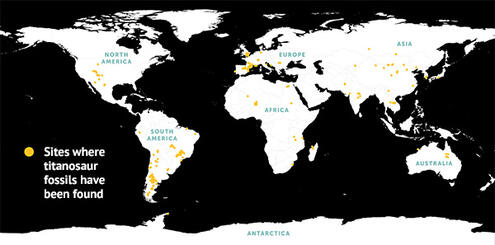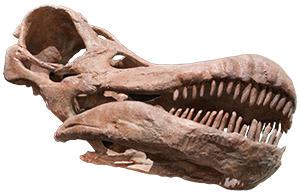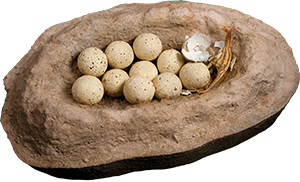
Hi, I’m Bruno, and I’m at the American Museum of Natural History. Today I’m in the fossil halls to interview a titanosaur (tie-TAN-o-SAWR). It’s one of the largest dinosaurs ever discovered!
Let’s find out how this dinosaur lived millions of years ago, how it came to the Museum, and what it’s like to be one of the biggest members of the collection.
Bruno: I hear you come from a big family—as in, you guys are large! Tell me about them.
Titanosaur: Like all titanosaurs, I belong to a group of dinosaurs called sauropods. Sauropods were plant-eaters with long necks and whip-like tails. All the biggest dinosaurs were sauropods. You’ve probably heard of sauropods like the Apatosaurus and Diplodocus. You can think of them as my cousins.

Bruno: Did all sauropods live around the same time? And in the same place?
Titanosaur: Sauropods, in particular titanosaurs, have been found on all continents, even Antarctica ! And different species of dinosaurs in the sauropod family roamed the planet for 140 million years. They all disappeared , though, around 65 million years ago, along with most other dinosaurs.

Bruno: Which dinosaur was the biggest sauropod?
Titanosaur: I don’t mean to brag, but titanosaurs were the largest of the bunch. I’m about 36 feet longer than the Apatosaurus at the Museum, and weigh twice as much!

Bruno: So tell us what it was like living in such a large body. You must have had a giant appetite. What did you eat?
Titanosaur: Well, like other sauropods, I ate a lot: about a ton—yep, 2,000 pounds—of plants a day.
Bruno: How did you get that much food in your body?

Titanosaur: For one thing, I’m not picky. I’d eat just about any plant I could reach—and with my long neck, I could cover a lot of ground without ever moving my feet! I also scraped leaves off trees with these long, rake-like teeth, then swallowed without stopping to chew. And I spent most of my day eating.
Bruno: But didn’t you have to watch out for predators?
Titanosaur: Are you kidding? Look at me—I didn’t have any predators!
Bruno: Titanosaur babies must’ve been huge, right?

Titanosaur: Actually, sauropods were pretty tiny when they hatched. Some probably weren’t much bigger than you as a baby. Each mom probably laid up to 40 eggs at a time in shallow nests she dug out with her feet.
Bruno: Really? So did sauropods live a long time to grow so large?
Titanosaur: Large animals do tend to live longer, but sauropod life spans weren’t any longer than most dinosaurs. They just grew really fast—faster than any other land animal. Scientists think that some sauropods doubled in size in the first five days of life!
Image Credits:
illustrations of Bruno and titanosaur, Ebony Glenn; illustration of saurapod parade, ©Raúl Martin; excavation, ©Dr. Alejandro Otero; titanosaur modeling and installation, ©AMNH/D.Finnin; all other illustrations and photos, ©AMNH.




 Biodiversity
Biodiversity
 Brain
Brain
 Genetics
Genetics
 Marine BiOLogy
Marine BiOLogy
 MicrobiOLogy
MicrobiOLogy
 PaleontOLogy
PaleontOLogy
 ZoOLogy
ZoOLogy
 AnthropOLogy
AnthropOLogy
 ArchaeOLogy
ArchaeOLogy
 Astronomy
Astronomy
 Climate Change
Climate Change
 Earth
Earth
 Physics
Physics
 Water
Water
